Graham Reid | | 4 min read
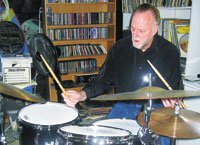
Early in 2007 I would get calls from Frank Gibson, who some say is
arguably this country’s finest drummer. I would have thought that was beyond
argument myself.
Frank was asking what he could do, how he might capitalise on a
playing career that had taken him around the world, won him numerous awards and
the acclaim of musicians across at least two generations, seen him play with
some of the best the jazz world could throw at us -- for more than a decade he
and the late bassist Andy Brown were New Zealand’s house rhythm section for
touring jazz giants and lesser lights -- and now . . .
He was still teaching (he noted his students got stories about
themselves in music magazines but he couldn‘t) and still playing the odd gig,
but . . .
It struck me as absurd and wrong that here was someone who -- if
he was in the States or Britain would be feted and acclaimed -- should be
looking for work, applying for financial assistance (and being declined) to
record in LA once more with his friend and Grammy-grabbing pianist Alan
Broadbent, and trying to figure out how he could get the acclaimed ex-pat
pianist Mike Nock back to record with him again.
Gibson’s musical credentials are beyond comparison in this
country (I doubt he could count the sessions he has played on) and yet . .
.
Then in the latter part of last year the jazz-fusion Dr Tree
album from the mid 70s was reissued and that band -- Gibson, guitarist Martin
Winch, keyboard player Murray McNabb and others -- played a one-off
gig.
Gibson underwrote his LA trip and recorded again with Broadbent
for an album, and now the Parallel 37 album of ‘81 -- Gibson with Milt
Jackson, Nock, John Scofield, Bobby Shew and others -- has been
reissued.
When you add in the reissue of the superb Open Door album
from ‘86 with Mike Nock, and Rainbow Bridge by the Frank Gibson Quartet
of 2003 there is a lot of Frank around. The man probably has own section in some
shops, he certainly deserves to.
Gibson is now a fraction past 60 but has the restless creative
energy of someone half his age. His dad, also a Frank, was a jazz drummer and
this Gibson played a duet with him at the Auckland Town Hall when he
eight.
Frank’s career after that is remarkable: gigs with McNabb while
in high school; playing the Mont Martre with the Mike Walker Trio as a teenager;
in Broadbent’s trio and various Claude Papesch bands; a couple of years in
Sydney with Andy Brown; home to form Dr Tree which won two rock awards for their
sole, self-titled album; backing Dionne Warwick, the Temptations and other
touring acts; a world tour with Leo Sayer; UK gigs with Dusty Springfield; the
Montreux Jazz Festival; recording at Abbey Road . . .
And we aren’t even into the 80s.
Then there were the Space Case albums (Executive
Decision in an eye-catching cover of two naked ladies’ taut backsides); the
Parallel 37 album which won jazz album of the year in ’82 . . . It just
keeps going. At some point he quit smoking and drinking and so on and started to
get really serious.
Along the way he has recorded some of this country’s finest
jazz: Open Door should be in any intelligent music collection and it is
welcome news he and Nock will record again this year.
The CD reissue of Parallel 37 puts a terrific Kiwi
jazz album back in the spotlight: where else could you hear artists as diverse
as locals Brian Smith, Bruce Lynch, Andy Brown, and Crombie Murdoch (the last
two now passed on) in the same context as internationals like guitarist John
Scofield (recorded before he hit the big time playing with Miles Davis), the
legendary Milt Jackson, guitarist Steve Erquiaga and others?
Well, in Frank’s company actually, he is the constant on
Parallel 37.
The reconfigured reissue adds a poignant touch: in early 1990
the gifted US guitarist Emily Remler came here and was, at 32, considered the
rising star of her generation. She was an accomplished rock and jazz player, had
recorded with Larry Coryell, and Herb Ellis considered her “the new superstar of
the guitar”.
She played a great concert at the London Bar and this woman who
could be picky about whom she might record with went into a studio with Frank.
She knew she was with her musical equal -- but they were to be her last
recordings. She died in Sydney a week later.
Those three previously unreleased and quietly sensitive tracks
have sensibly been added to Parallel 37, a world class album by any
consideration.
In notes on the Jazzmobile album of ‘87 Frank wrote how
he felt privileged to express himself through the art form created by Louis
Armstrong, Lester Young, Bud Powell, John Coltrane and others. He said the music
these great men gave should always be treasured.
It is fitting Frank Gibson can see, through the reissues, that
some are recognising what he has given should equally be valued.

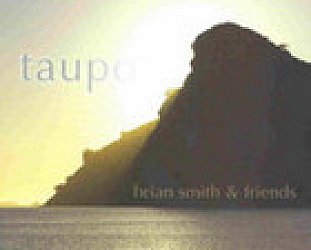
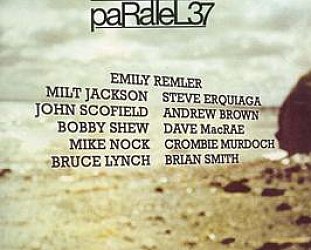

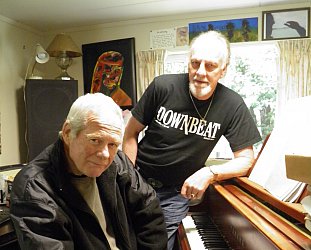
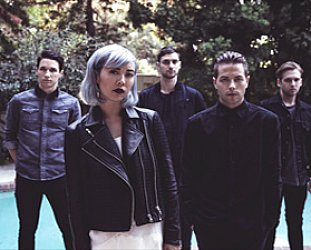
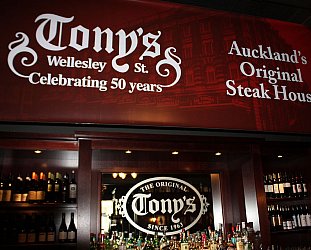
post a comment